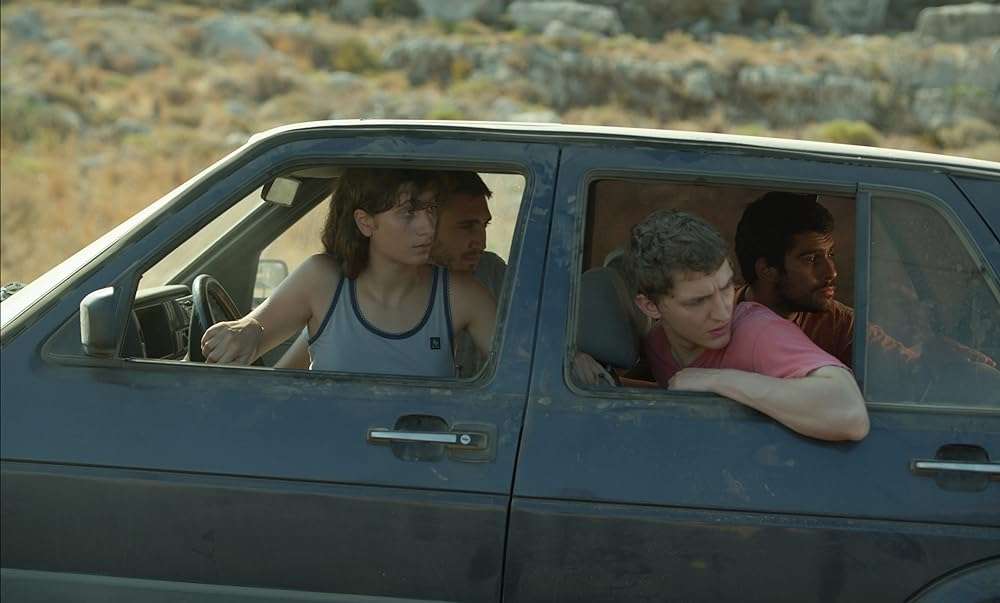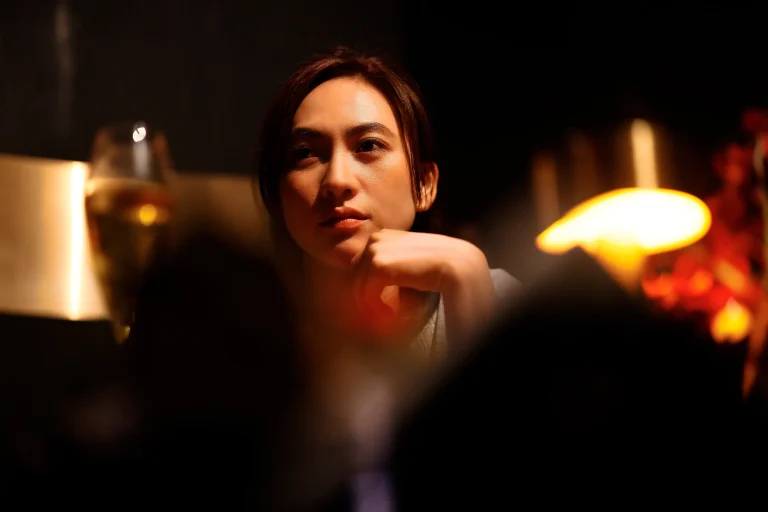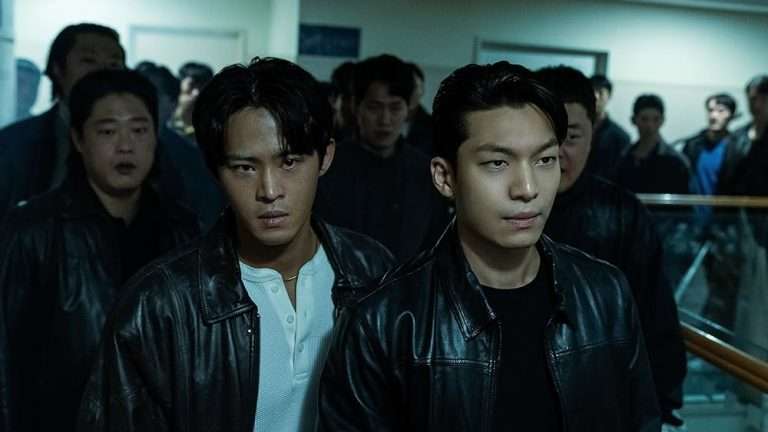Freely inspired by Sophocles’ famous text Oedipus Rex, Angela Schanelec’s Music, the follow-up to her Berlinale Silver Bear winner I Was At Home, But…(2019), finds Schanelec transposing the ancient Greek tale to modern-day Greece and Germany. In Schanelec’s singular retelling, an abandoned baby boy (Jon) is found and raised by his foster parents. True to the legend, he gets into an altercation with a man and is sent to prison for murder (patricide). There, he meets the female warden Iro – the film’s version of the Greek character Jocasta – who immediately takes to Jon. They fall in love and, once Jon is out of prison, start a family. However, as luck (or fate) would have it, Jon’s tragic backstory catches up with him, leading to catastrophic consequences for everyone involved.
And yet, the seemingly heavy plot turns out to be the least important, even redundant, aspect of the film. Schanelec, no doubt the most austere and formally audacious of the Berlin School group of filmmakers, finds in the Oedipus story a perfect literary counterpart to her own stylistic tendencies: both are structured around absence, omissions, and an overwhelming feeling of disorientation. Indeed, Music is replete with the German auteur’s signature flourishes: elegantly composed tableaux, an elliptical narrative, minimal dialogue, and a protracted sense of duration.
What is especially striking in Music is the use of abrupt narrative leaps across space and time. Schanelec completely dispenses with cause and effect logic; a simple and incisive cut here often transports one across months, years, landscapes, and even countries. Early on in the film, Schanelec cuts from Jon’s stepmother washing his baby feet to a teenage Jon wrapping a bandage around his legs, a jarring jump that, in Schanelec’s deft hands, becomes as easy-going as a shot-reaction-shot sequence.
Later, in a beguiling series of cuts, we see Jon get imprisoned for his crime, Iro’s growing attraction towards him, Jon getting released from prison, and finally, Jon and Iro visiting his step-parents in the countryside, now with three children of their own, including a grown-up boy. No explanation is given, and neither are the roles of the new characters established. Much like in her previous films, it is the viewer who has to actively engage with the film, in a sense, almost co-creating the narrative.
Crucial to Music, and to Schanelec’s filmography in general, is a portrait of the world recalcitrant to human will and desire, and in which chance and emotion determine the trajectory of our lives. In many ways, Schanelec’s vision is truer to how one actually experiences everyday life, ruled as it is by fortuitous encounters and random beginnings (or endings). Equally telling is the minute focus on banal actions and events that have no direct bearing on the narrative.
Schanelec, for instance, spends a considerable amount of time filming Jon’s friends as they get ready for a swim in the Aegean Sea. We experience a girl’s initial trepidation at entering the water and also their smooth strokes as his friends swim away towards the horizon. Later, the camera lingers on their movements as they leisurely change out of their swimsuits. In another pivotal scene, we see Iro buying foot ointment for Jon from a local pharmacy. Schanelec films the interaction in an almost unbroken gaze, paying close attention to the elegant, almost sensuous, manner in which the pharmacist packs the ointment in a paper bag, folds it, and finally hands it over to Iro.
Such digressions, apart from signaling a break with traditional narrative structure, also reveal a disquieting metaphysical truth: that life is always and already happening around us, in spite of ourselves and what we intend to do. Underlying Jon’s tragic and pre-ordained life story is a tussle between the individual and the world and between subjectivity (free will) and mythology (fate/predestination).

Schanelec formally mirrors this thematic thread not just through an elliptical style of editing but also through Bressonian compositions that zero in on fragmented body parts and the to-and-fro movement of doors. For instance, we see Iro and Jon enter and exit through multiple prison doors until they finally stand facing each other. Later, Jon exits the main prison gate in a long shot, ready to embark on a new chapter in his life with Iro (Schanalec holds on to the shot until the automatic gate is fully shut). In an especially poignant closeup, Jon and Iro, alone and free in their apartment, hold hands under running water, one of many scenes in which hands and doors evoke the tenderness (and violence) that human existence encompasses but also the choices that are invariably thrust upon us in the course of our lives.
Such a tussle is also reflected in the acting style employed in the film, which pares down drama almost to the point of automatism (one is reminded here of Bressons’s famous quip – ‘Nine-tenths of our movements obey habit and automatism. It is anti-nature to subordinate them to will and thought.’) Indeed, Music’s actors often come to resemble classical statues, chiseled and sculpted to perfection, but simultaneously devoid of agency, in a sense reinforcing the quintessential trope of ancient Greek tragedies – the subjection of human life to the whims of the gods.
There is more to Music, however, than these stylized (and overwrought) techniques of European art-house cinema. The absences, elisions, and narrative jumps lend a certain oneiric feeling to the film’s unfolding, which is further complemented by a mystifying absence of narrative logic. Thus, Jon continues to look the same age as his birth parents despite the narrative making great leaps across time.
Schanelec also imparts a droll sense of theatricality to the entire proceeding, as when Jon and other prisoners are shown wearing brown wooden sandals that are used in recreating Greek plays. Such bursts of surreality transform Music into a whole much more than the sum of its parts, a strange and mysterious entity that is not so much to be understood as to be experienced. A scene featuring Iro and her colleague is emblematic of the film’s wisp-like structure: needing help with a crossword puzzle, she asks Iro for another “six-letter word for mirror.” The answer – “Dream”.
Perhaps the key to appreciating the film is to be found in its title. Just as one experiences music intuitively, losing oneself in its rhythms and beats, Schanelec too wants the viewer to privilege emotion over rational explanation, to first and foremost feel the film – its resonances, rhythms, and textures – and to let it evoke a particular mood. Indeed, Music also marks a departure from Schanelec’s erstwhile pessimistic film endings; unlike the Oedipus myth, Music doesn’t end with Jon gouging out his eyes in despair.
Rather, even as he is losing his eyesight, Jon is able to find solace and contentment – and arguably even some sort of grace – in music. It is during such moments, as when Iro introduces Jon to classical Baroque music or when Jon, after Iro’s suicide, is shown attempting to sing a contemporary indie song, that we encounter a phenomenon as true for music as it is for cinema, especially Schanelec’s: the pleasure and reverie of abandoning oneself to something vastly beyond our control.



![The Scoundrels [2019]: ‘NYAFF’ Review – A Standard Fare Which Could Have Stood Out with a Different Approach](https://79468c92.delivery.rocketcdn.me/wp-content/uploads/2019/07/The-Scoundrels-1-high-on-films-768x432.jpg)
![Tokyo Godfathers [2003]: A Richly-Textured Christmas Dramedy](https://79468c92.delivery.rocketcdn.me/wp-content/uploads/2015/12/tokyo-godfathers-2-1024x554.jpg)

![Bare Trees in the Mist [2020]: ‘DIFF’ Short Film Review – The wafer-thin weight of gratitude](https://79468c92.delivery.rocketcdn.me/wp-content/uploads/2020/10/Bare-Trees-in-the-Mist-1-highonfilms-768x428.jpg)
